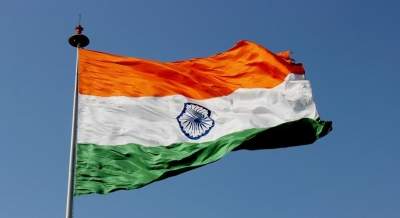New Delhi (IANS) As India has finalised several free trade agreements (FTAs) with major countries like Australia and the UAE, through which it aims to widen its exports and at the same time seeks to improve its trade volumes, veteran lawyer V. Lakshmikumaran, who holds an expertise in matters related to foreign trade policy apart from all areas of taxation, in an interview with IANS, explains why India is bullish on such trade pacts and the way forward.
Here are some excerpts from the detailed interview.
Q: The Indian government has sharpened its focus on FTAs in the recent past. What do you feel is the driving factor behind this?
A: Under the World Trade Organisation (WTO) mechanism in 1995, the focus was more on multilateral agreements. Now the major difference is that global perspective, global needs and global trade are under greater focus. The intent of the government is now more on ‘Make In India’ and the attitude is inward looking. So rather than waiting for WTO reforms to happen, India wants to look at bilateral trade relations with countries with which it can increase its trade volume.
Q: What are the safeguards which need to be kept in mind while finalising FTAs with other nations?
A: The main focus area of any trade agreement is to ensure that the market access to Indian goods is available in the country with which the agreement is being finalised. At the same time though, market access needs to be given to their products also in India.
In addition to this, it should also be seen that products and services related to which particular sector(s) can get more market access in the other country. At the same time though, it should be ensured the Indian sectors are able to withstand pressure and competition from goods coming from the trading country. Also best practices should be ensured from trading nations.
Q: Can trade pacts between India and other nations be negotiated in
Rupee terms? Will such agreements be beneficial for India?
A: As far as currency is concerned, we have never had trade agreements in Rupee. If we put a prerequisite of trading in Rupee while entering into a bilateral trade agreement with a major country, then the negotiations would not move forward. The Indian economy has to manage locally to withstand the pressure of currency fluctuation.
Q: India’s current account deficit (CAD) is rising, Rupee is depreciating as greater focus seems to be on imports rather than exports, due to which foreign exchange levels are also receding. How can FTAs address this imbalance?
A: The whole idea behind FTAs is to increase exports in terms of goods and services, and the manner in which we negotiated with UAE and Australia, it could not have happened without having good bilateral relations. The whole idea is to see how market access of our goods can be enhanced. So I would say that in my personal opinion, managing currency is an internal affair and should not be the main agenda for trade agreements.
Q: What should be done to safeguard Indian interests and ensure level playing fields in FTAs?
A: In any agreement whether with developed or developing countries, we need to be careful on what commodities are entering the country, how are they impacting the market, existing duty rates and what the other nation is asking for.
We should avoid abuse of agreements and for this, strong rules of origin should be there and only genuine goods should come in (India). We can also look at the kind of market access as far as the service industry is concerned. Also in modern agreements, level playing fields for orders (originating from India) are also taken care of.
Q: Should there be greater focus on labour intensive issues while negotiating such pacts?
A: There are chapters related to human intensive and small and medium enterprises sectors in trade agreements and governments have databases of countries where industries are labour intensive. Also while negotiating such pacts, one needs to be cautious about allowing (certain kind) of goods coming to India. Government adopts a consultative process with line ministries and stakeholders before finalising such (labour intensive centric) agreements.
Q: Are pacts with smaller countries disadvantageous for a big country like India?
A: Once we compete with major countries with which our bilateral trade relations are good then we should also look at countries which may offer advantages in terms of geography and special advantages in terms of labour and material. etc. The government then should take strategic decisions to enter into agreements with such nations.
Q: Is there a need to review old trade agreements to make them more relevant with changing times?
A: These systems are inbuilt in trade agreements to ensure their relevance (keeping in mind the changing geo-political scenario). For example, if a particular commodity is flooding our markets, then there are safeguard mechanisms to address such issues. The government should constantly monitor trade volumes from such countries and look out for
any kind of misuses or disadvantages. There are inbuilt mechanisms in trade agreements to address these aspects.
Q: While entering into trade pacts with nations which are close competitors, what aspects need to be kept in mind?
A: Parameters and norms which India follows with developed or developing countries remain the same with all nations.
Q: How can aspects related to trade imbalances be addressed in FTAs?
A: Government while negotiating with other nations, makes calculations and predictions on what is likely to happen in future. It is like legislations where the current situation and predictable future is taken into account. There are inbuilt mechanisms whereby we take into account unpredictable developments and review the situation.

